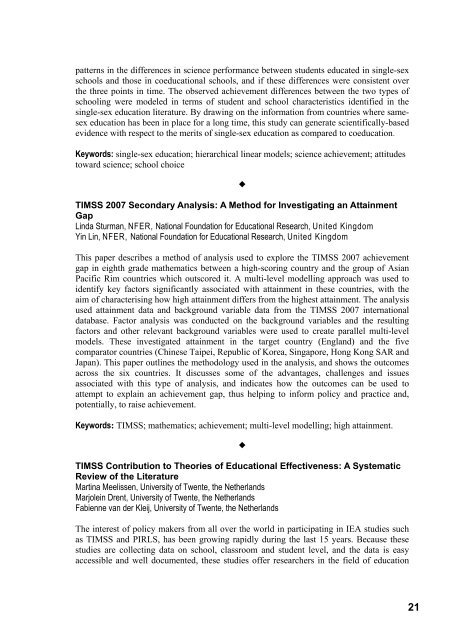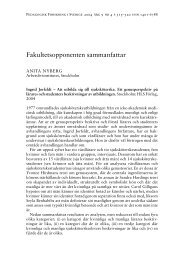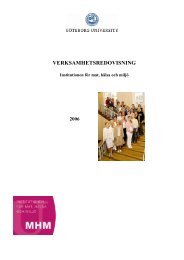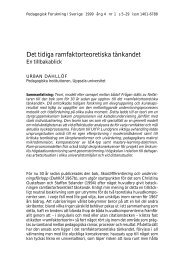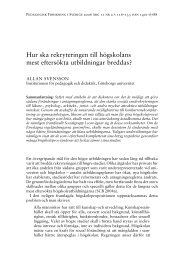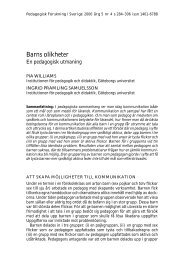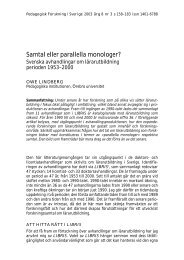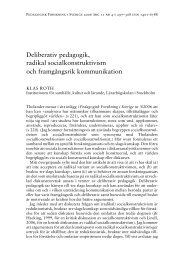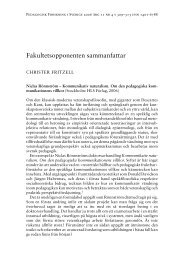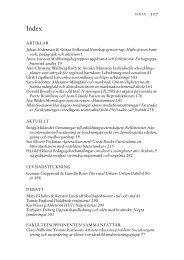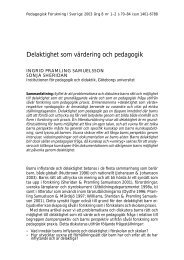University of Oslo Workshops June 29-30 Conference July 1-3 ...
University of Oslo Workshops June 29-30 Conference July 1-3 ...
University of Oslo Workshops June 29-30 Conference July 1-3 ...
Create successful ePaper yourself
Turn your PDF publications into a flip-book with our unique Google optimized e-Paper software.
patterns in the differences in science performance between students educated in single-sex<br />
schools and those in coeducational schools, and if these differences were consistent over<br />
the three points in time. The observed achievement differences between the two types <strong>of</strong><br />
schooling were modeled in terms <strong>of</strong> student and school characteristics identified in the<br />
single-sex education literature. By drawing on the information from countries where samesex<br />
education has been in place for a long time, this study can generate scientifically-based<br />
evidence with respect to the merits <strong>of</strong> single-sex education as compared to coeducation.<br />
Keywords: single-sex education; hierarchical linear models; science achievement; attitudes<br />
toward science; school choice<br />
TIMSS 2007 Secondary Analysis: A Method for Investigating an Attainment<br />
Gap<br />
Linda Sturman, NFER, National Foundation for Educational Research, United Kingdom<br />
Yin Lin, NFER, National Foundation for Educational Research, United Kingdom<br />
<br />
This paper describes a method <strong>of</strong> analysis used to explore the TIMSS 2007 achievement<br />
gap in eighth grade mathematics between a high-scoring country and the group <strong>of</strong> Asian<br />
Pacific Rim countries which outscored it. A multi-level modelling approach was used to<br />
identify key factors significantly associated with attainment in these countries, with the<br />
aim <strong>of</strong> characterising how high attainment differs from the highest attainment. The analysis<br />
used attainment data and background variable data from the TIMSS 2007 international<br />
database. Factor analysis was conducted on the background variables and the resulting<br />
factors and other relevant background variables were used to create parallel multi-level<br />
models. These investigated attainment in the target country (England) and the five<br />
comparator countries (Chinese Taipei, Republic <strong>of</strong> Korea, Singapore, Hong Kong SAR and<br />
Japan). This paper outlines the methodology used in the analysis, and shows the outcomes<br />
across the six countries. It discusses some <strong>of</strong> the advantages, challenges and issues<br />
associated with this type <strong>of</strong> analysis, and indicates how the outcomes can be used to<br />
attempt to explain an achievement gap, thus helping to inform policy and practice and,<br />
potentially, to raise achievement.<br />
Keywords: TIMSS; mathematics; achievement; multi-level modelling; high attainment.<br />
TIMSS Contribution to Theories <strong>of</strong> Educational Effectiveness: A Systematic<br />
Review <strong>of</strong> the Literature<br />
Martina Meelissen, <strong>University</strong> <strong>of</strong> Twente, the Netherlands<br />
Marjolein Drent, <strong>University</strong> <strong>of</strong> Twente, the Netherlands<br />
Fabienne van der Kleij, <strong>University</strong> <strong>of</strong> Twente, the Netherlands<br />
<br />
The interest <strong>of</strong> policy makers from all over the world in participating in IEA studies such<br />
as TIMSS and PIRLS, has been growing rapidly during the last 15 years. Because these<br />
studies are collecting data on school, classroom and student level, and the data is easy<br />
accessible and well documented, these studies <strong>of</strong>fer researchers in the field <strong>of</strong> education<br />
21


